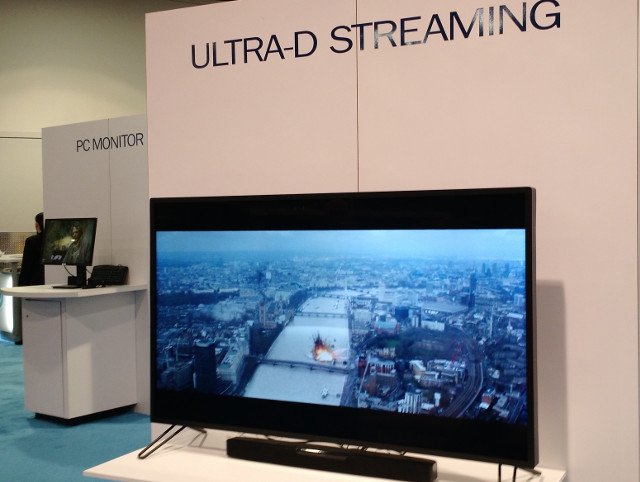Glasses-free 3D is not dead, but it is not thriving either. A few companies continue to develop products and they seem to be finding customers, but these remain niche products. At CES 2017, we had a chance to catch up with one of these developers, Stream TV.
We spoke with Founder and CTO of Stream TV’s R&D Subsidiary SeeCubic, Hans Zuidema at CES. He told us the Stream TV team is focused on the glasses-free ecosystem for applications in entertainment, gaming and signage, primarily.
For the entertainment sector, they now have a plug-in for After Effects that can create the glasses-free Ultra-D format. This format is a 2D image plus a depth map plus metadata. It allows the end user to adjust the parallax, depth offset and depth volume on a frame by frame basis. It is now possible to stream Ultra-D content over most adaptive streaming packages including HLS or DASH using HEVC encoding. It is a dual stream approach but wrapped up in one container.

Zuidema said that, in the past, I have mentioned the need to have really good 2D image quality on their 3D displays. They now have a new design that does a better job of exactly this. The 50” display is the latest model to implement this. The 65” with a Qualcomm SnapDragon processor, will be upgraded to this new optical layer and processing algorithm in early Q3’17.
He said that they have tested their displays in side-by-side demos with conventional 2D displays, mostly for mobile applications such as cars, airplanes and VR, with very positive results.
At last year’s CES, the company was very optimistic that 2016 would be the year of glasses-free 3D. It does not seem to have been the case, as the company reported that no brands are selling their 65” Ultra-D TV in the market today, so they are selling it on their own for $4500 for a single unit.
The firm continues to evaluate the market and has a variety of display ready to go in screen sizes including 6”, 10”, 29”, 32” 50”, 55” and 65”. They are also starting to look at developing solutions for 360-degree applications using glasses-free displays.
On the studio side, they are working with some partners now to help create content. In digital signage, they are working with a CMS digital signage operator and have created a new box (with a company called IADEA) for download and playback of Ultra-D content at signage locations.
In the booth, we had a chance to look at some of the Ultra-D content. The quality definitely improves each year with fewer artifacts and a bigger depth volume. However, you still notice transitions from zone to zone which can be disturbing for many people. – CC

